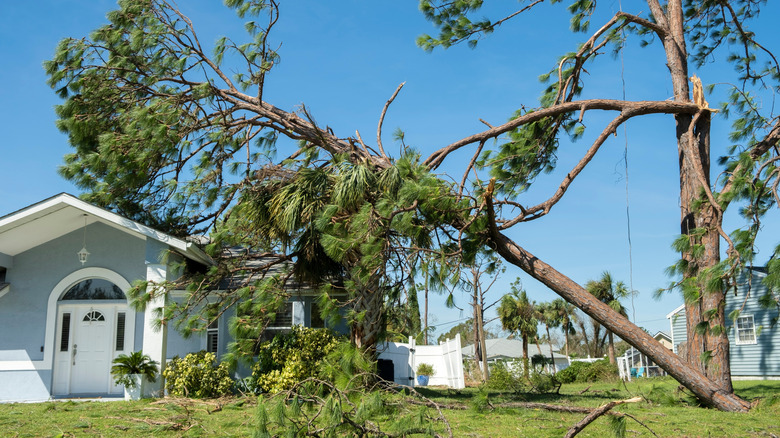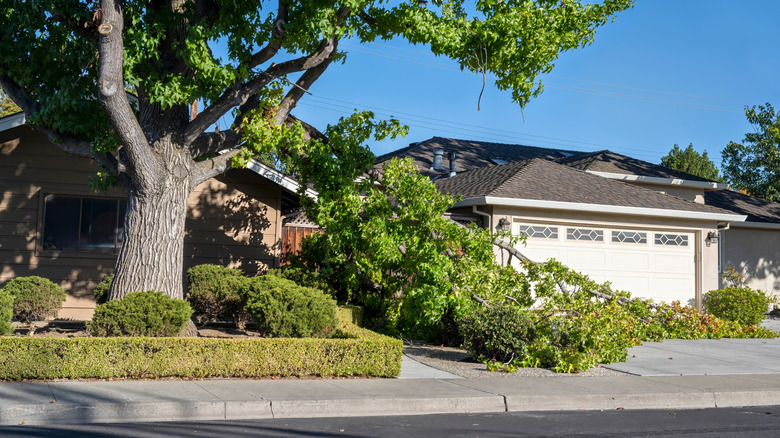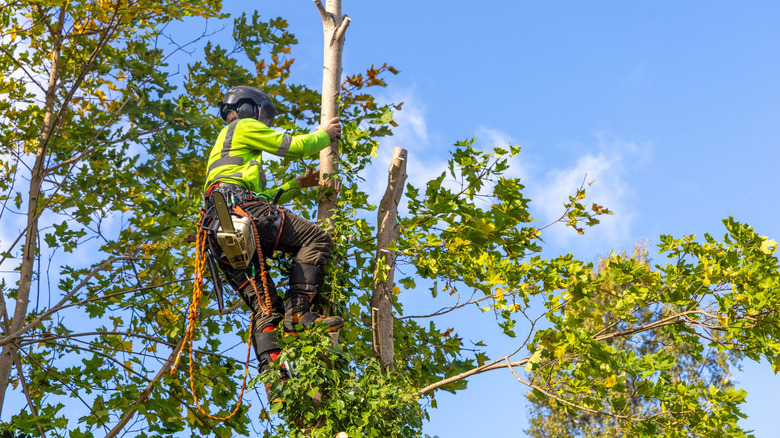Neighbor's Tree Fell In Your Yard? Here's Exactly What To Do Next
Waking up to find your neighbor's tree unexpectedly sprawled across your yard is any homeowner's unwelcome surprise. This event is the kind that can instantly trigger a cascade of issues and questions: Did anyone get hurt? What caused it? What about the damage to my well-maintained yard or structures? Who is responsible for storm damage tree removal? Trees falling is something that many homeowners will likely deal with at some point, and knowing the steps necessary to take care of things can save you a lot of stress.
To navigate this process smoothly and effectively, evaluate the overall damage, talk with your neighbor, collect evidence, reach out to insurance, and hire a professional tree removal team to clear out the fallen branch or tree. We also recommend making sure you properly understand any local tree laws (like what to do if your neighbor's tree is overhanging your garden), HOA bylaws if applicable, insurance, and other legal considerations. It is natural to feel overwhelmed in a situation like this. Thoughts of huge repairs, tiresome insurance claims, and even disputes you may have with your neighbors might quickly come to mind, but by taking a methodical approach, you can streamline the whole process.
Which party is responsible for the damage?
Determining who is responsible for any fallen tree damage is the toughest part. Why? Because trees can fall for any number of reasons, from disease to severe weather. The latter is often the reason, of course, thanks to strong winds, heavy snow, hail, or a lightning strike. If this is the case, the legal system typically views this as an act of nature or an "act of God." In these situations, you will generally be deemed responsible for whatever parts of the tree landed on your property, even up to a deductible.
However, if the tree in question was in rough shape before it fell, things get more complicated. If, before it fell, the tree was visibly dead, sick, or dying, and your neighbor was not actively doing anything to mitigate it, it is possible that the full responsibility could shift to them. Proving any negligence on their part is key (but also tough, unless you are regularly taking photos of every tree within falling distance of your property). If you are able to provide sufficient proof that, before falling, the tree was both in bad condition and being ignored by your neighbor, they will most likely take the full blame.
Do note, though, that laws regarding trees and tree-based damage vary by state. Certain states even have regulations about keeping trees trimmed, especially around property lines. We recommend taking a moment to look up your local laws regarding tree ownership and responsibility so you're in the know.
Documenting things & getting the tree removed
Naturally, your first priority should be making sure everyone involved is safe. Then, note what property (if any) was damaged; most importantly, do not touch anything in the area during this process if you can, as it is considered evidence. Your next priority is to document everything. Grab a smartphone or camera and take a ton of photos of the affected area from multiple angles; be sure to capture the tree's position, any damage sustained by your property (so, your house, plants, mailbox, cars, fences, etc.), and the condition of the fallen tree. This is especially critical if you can see that the tree was diseased or otherwise compromised before it fell. Having plenty of evidence makes it easy for legal entities to evaluate the situation and make a well-informed decision.
After this, calmly talk with your neighbor. Tell them what happened, that you have gathered evidence, and discuss the tree's health. Then, reach out to your insurance to file a claim; they will inform you what is covered and what is not. They should guide you through the claims process.
Next, focus on getting that tree removed. This really isn't a DIY task, and we recommend calling a certified and insured tree removal service to have them take care of it. Likewise, we recommend learning how to prune your trees the right way as a preventative measure. To end, remember to keep meticulous records of the entire process, from photo evidence to receipts from the tree removal service. Good evidence has your back.


